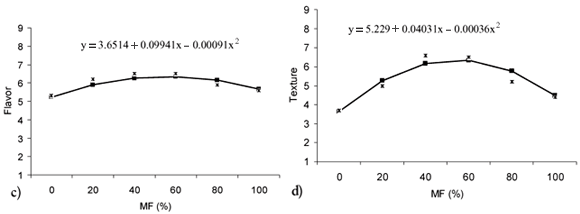Filleting yield of Nile tilapia Oreochromis niloticus (L.) is low (30%) and generates large amount of wastes that may turn into environmental and economic problem. However, these wastes can be used for the extraction of minced fish (MF) which can be used in the preparation of sausages. The objective of this study was to assess the quality of sausages prepared with 0, 20, 40, 60, 80 and 100% of MF from Nile tilapia filleting waste during storage at 0±0.3ºC. Alterations in the instrumental color (L*, a* and b*), lipid oxidation (TBARS), total volatile nitrogenous bases (TVB-N), pH, microbiological condition (pathogenic bacteria and aerobic psychrotrophic bacteria), and sensory attributes (color, odor, flavor, texture and overall acceptability) were evaluated for up to 40 days. The addition of MF to sausages increased TBARS values and decreases TVB-N, L*, a* and b* values. Acceptability of color attribute decreased with increasing MF; best flavor, texture and overall acceptability scores were registered for sausages containing 40 and 60% MF; best odor was registered for 100% MF. Pathogenic microorganisms were not detected, but decrease in pH and proliferation of aerobic psychrotrophic bacteria which, however, did not compromise sensory evaluation of sausages were registered throughout storage. Sausages prepared with MF from tilapia filleting waste have a shelf-life of 40 days when stored at 0±0.3ºC, and the maximum recommended MF inclusion to maintain good sensory quality is 60%.
Fish sausage; lipid oxidation; filleting waste; shelf-life; sensory acceptability











